Biography
Robert De Niro, Sr. (1922-1993)
Poet, sculptor, and artist De Niro, Sr. became known during the postwar era for his dynamic, richly-colored paintings that gracefully synthesized modernist abstraction with more traditional compositions and formal themes.Born in Syracuse, New York in 1922, De Niro was passionate about art from an early age
While still in high school, he attended art classes at the Syracuse Museum, where he was provided with a private room where he could paint independently. In addition to his early studies with etcher Ralph Pearson, he had the good fortune of studying under two of the 20th century’s leading colorists: first with Joseph Albers at Black Mountain College (1940), and later with Hans Hofmann (1941-42).
His work reflects his extensive training with these masters, as well as a strong reverence for the French avant-garde painters who influenced them. The long broken brushstrokes of Derain, the boldlyrical contours of Matisse, and the modernist non-perspectival compositions of Bonnard are each clear inspirations in De Niro’s best works.
While studying with Hofmann at his Provincetown summer school, De Niro met painter Virginia Admiral, whom he married in 1942. The couple moved into a large, airy loft in New York’s Greenwich Village, where they were able to paint. Their illustrious circle of friends included writers Anais Nin and Henry Miller, playwright Tennessee Williams, and actress and famous Berlin dancer Valeska Gert who modeled for Hofmann’s classes. Admiral and De Niro separated shortly after their son, Robert De Niro, Jr. was born in December of 1943.
A perfectionist, De Niro Sr. often painted and repainted his canvases, completing hundreds of studies of the same composition until he was pleased with his work. He was meticulous with his choice of pigment, always searching for the perfect colors and rarely satisfied.
De Niro Sr.’s first solo exhibition was held at Peggy Guggenheim’s Art of this Century, New York, in 1946, when he was twenty-four years old. He exhibited frequently throughout the 1950s at the Charles Egan Gallery, where his work hung alongside de Kooning, Kline, and Guston.
In the early 1960s, De Niro Sr, looking for fresh inspiration, abandoned New York for Paris. As his work continued to evolve and mature, he sold fifty oil paintings and works on paper to the collector Joseph Hirshhorn, and received much critical praise, as well as a Guggenheim Fellowship in 1968.
The political and cultural climate began to change in the mid-60s, however, and Pop Art eclipsed many artists working in a more traditional vein. Though the mainstream success of his contemporaries eluded De Niro Sr., he continued his brilliant exploration of color and form until he passed away in 1993, leaving behind a vibrant oeuvre that is included in museum collections such as: the Hirshhorn Museum and Sculpture Garden, and the Corcoran Gallery of Art, Washington, D.C.; the Metropolitan Museum of Art, the Whitney Museum of American Art, and the Museum of Modern Art, New York, among others. In 1995, his son, award-winning actor Robert De Niro, Jr., along with his mother, Virginia Admiral, honored the late painter by supporting an exhibition of his works at the Salander-O’Reilly Gallery in New York.

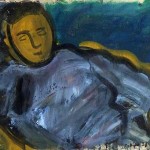 Reclining Figure
Reclining Figure
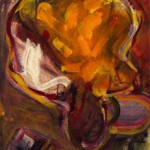 Still Life
Still Life
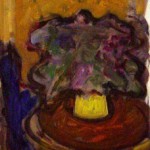 Still Life
Still Life
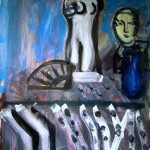 Interior with Figure
Interior with Figure
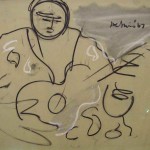 Man with Guitar
Man with Guitar
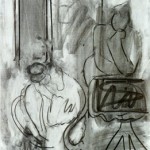 Two Nudes
Two Nudes
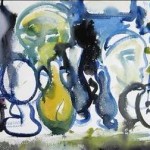 Tabletop Still Life
Tabletop Still Life
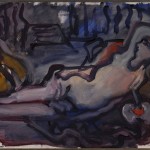 Odalisque
Odalisque